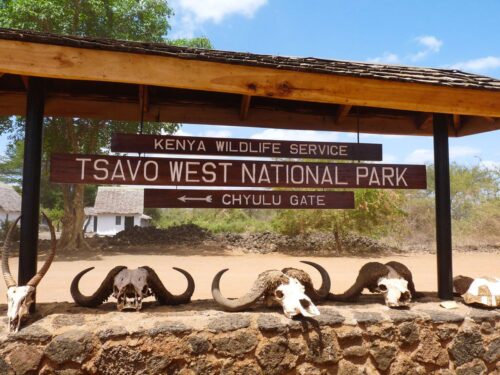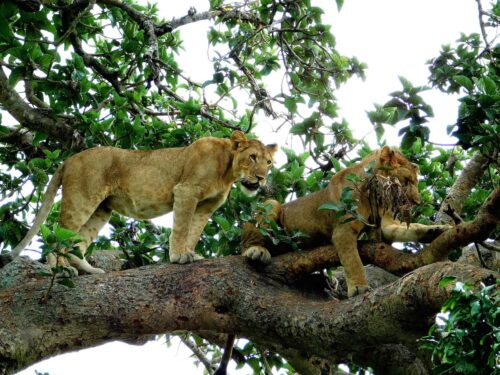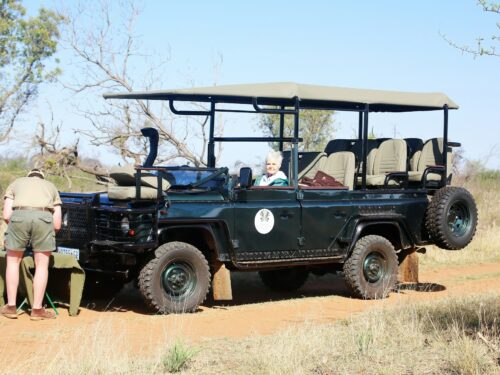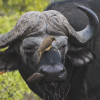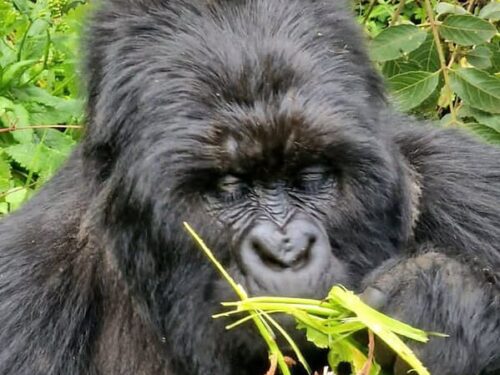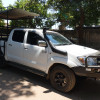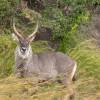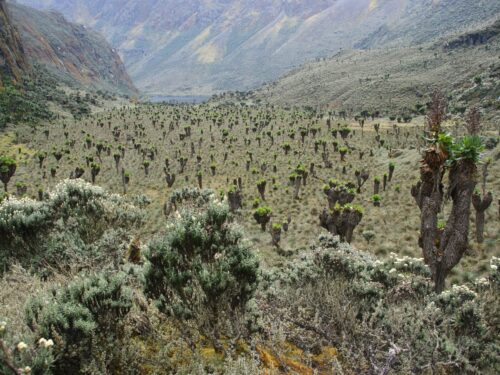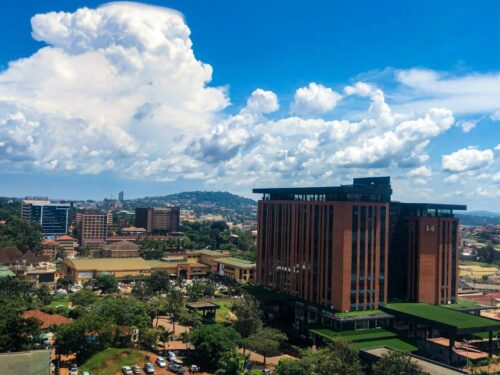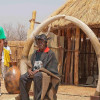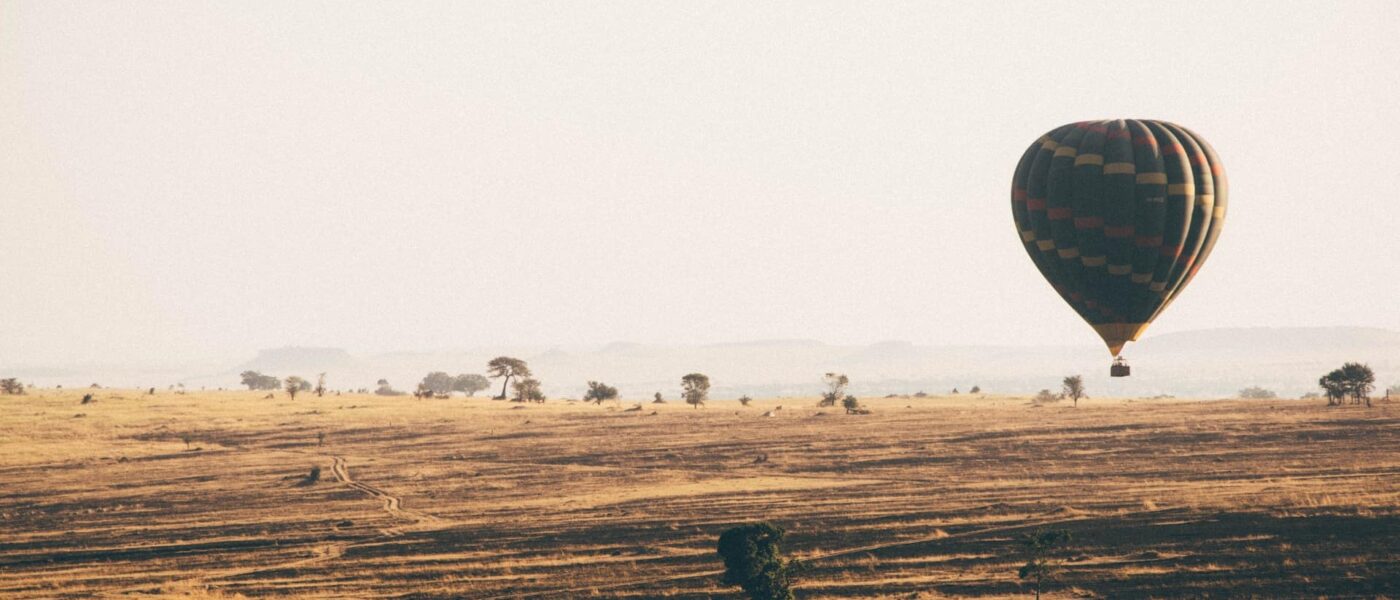

Tanzania, a country celebrated for its sprawling wilderness and diverse ecosystems, is a paradise for nature enthusiasts and adventurers alike. Among its most treasured jewels are the national parks in Tanzania, each offering unique landscapes, wildlife, and experiences that draw visitors from all corners of the globe.
These sanctuaries are about more than majestic wildlife or breathtaking scenery; they are about the very essence of Africa itself.
From the iconic Serengeti, known for its vast plains and the spectacular Great Migration, to the Ngorongoro Crater, a haven for wildlife nestled within an extinct volcano, Tanzania’s national parks are a testament to the country’s commitment to conservation and the celebration of the natural world.
Here are the top national parks in Tanzania to visit.
Top Five National Parks in Tanzania
Going on safari is one of the most popular things to do in Tanzania. If that’s your dream, make sure to include at least one of the below national parks in Tanzania in your itinerary.
Whether you’re a seasoned safari-goer or a first-time visitor, prepare to be captivated by the magic of Tanzania’s national parks.
Related read: Tanzania vs. Kenya Safari: Which is the Best?
1. Serengeti National Park
Serengeti National Park is known for its vast savannas and the Great Migration. It is home to millions of wildebeest, zebras, and gazelles, as well as predators like cheetahs and crocodiles. It is adjacent to the Serengeti and characterized by acacia-dotted landscapes. It is part of the Great Migration route and hosts the “Big Five“—elephant, Cape buffalo, leopard, lion, and black rhino.
Here’s a closer look at what makes Serengeti so extraordinary:
- Great Migration: The annual migration sees millions of wildebeest, accompanied by zebras and gazelles, traversing the
Serengeti plains in search of food and water. This spectacle of nature is a breathtaking display of movement and survival
instincts. Indeed, Serengeti National Park offers an unparalleled opportunity to witness the wonders of wildlife, particularly
during the Great Migration.
Related read: Best Time to Visit Serengeti National Park
- Abundance of Wildlife: Apart from the Great Migration, Serengeti is home to an incredible diversity of wildlife. Visitors have
the chance to spot the renowned Big Five – lion, elephant, buffalo, leopard, and rhinoceros – along with numerous other
species, including cheetahs, giraffes, hyenas, and various bird species.
- Landscape: The Serengeti’s vast savannas, dotted with acacia trees and rocky outcrops, provide a stunning backdrop for
wildlife viewing. The open plains offer excellent visibility, making spotting animals in their natural habitat easier. - Conservation Efforts: Serengeti National Park is a hotspot for tourism and a crucial area for wildlife
conservation. Efforts to protect the park’s ecosystem ensure the continued survival of its diverse fauna and flora.
Overall, Serengeti National Park stands as a testament to the raw beauty and abundance of wildlife in Africa, offering
visitors an unforgettable safari experience

2. Arusha National Park
Arusha National Park is located in the northeastern region of Tanzania near the city of Arusha and is indeed a captivating
destination offering a blend of scenic beauty and diverse wildlife. Its proximity to Mount Kilimanjaro provides breathtaking
views of Africa’s highest peak, adding to its allure.
The park boasts a remarkable variety of landscapes, ranging from lush rainforests, sparkling lakes, and cascading waterfalls
to volcanic formations and sprawling savannahs. This diverse terrain creates a habitat that supports a wide array
of flora and fauna.
One of the park’s notable attractions is its rich avian population, with numerous species of birds calling it home. From the
striking silvery-cheeked hornbill to the mesmerizing sight of thousands of pink flamingos adorning the lakes, birdwatchers
are in for a treat.
Moreover, Arusha National Park is renowned as the prime location in northern Tanzania for observing the black-and-white
colobus monkey, offering visitors a rare opportunity to witness these captivating primates in their natural habitat.
Whether you’re a nature enthusiast, wildlife lover, or simply seeking breathtaking landscapes, Arusha National Park
promises a memorable experience with its captivating scenery and abundant wildlife.
Related read: How to Get to Serengeti National Park From Arusha

3. Tarangire National Park
Whether you are visiting for a day trip or having an overnight, Tarangire has something for everyone.
The park is impressive for its famous concentration of wild animals, especially the elephants, and it is also one of
the finest birding destinations in East Africa.
The park’s name comes from the Tarangire River, which crosses it and covers an area of 2850 km2.
Tarangire has a bimodal rainfall with short rains starting from November to December, long rains from March to May and dry
season from June to October and January to February. The park is located between 900m and 1250 meters with annual average rainfall ranging from 650 to 700mm.
The Park has remarkable attractions with large groups of Elephants, the spectacular natural beauty of the savanna landscape and
magnificent majestic Baobabs. Over 550 different bird species have been recorded in the park, of which several are
threatened or endemic.
Getting there:
The Park can be accessed by road or air
- Road: The park is 121km through a tarmac road from Arusha city.
- Air: The park can be reached by flight from Kilimanjaro International Airport, which is 46km from Arusha. Charted flights are
also available from Arusha to Kuro Airstrip located inside the park

4. Ngorongoro National Park
The Ngorongoro Conservation Area indeed holds a remarkable place in the realm of natural wonders, particularly due to the
stunning Ngorongoro Crater.
Here’s why it’s considered such a unique destination:
- Volcanic Caldera: The Ngorongoro Crater is a geological marvel formed by the collapse of a massive volcano millions of years ago. Its circular shape and steep walls create a natural enclosure that supports a diverse ecosystem.
- Wildlife Diversity: Despite its relatively small size compared to other national parks, the Ngorongoro Crater boasts an incredibly high concentration of wildlife. Visitors can see all of Africa’s iconic large predators, including lions, leopards, cheetahs, hyenas, and many herbivores such as elephants, buffalo, zebras, and wildebeest.
- Scenic Beauty: The crater’s landscape is breathtaking, with sweeping vistas, lush grasslands, and shimmering soda lakes. The contrast between the verdant crater floor and the surrounding arid plains adds to its visual appeal.
- Conservation Efforts: The Ngorongoro Conservation Area is dedicated to preserving the delicate balance of its ecosystem while promoting sustainable tourism. This ensures that future generations can continue to appreciate its natural splendor.
The Ngorongoro Crater features the largest unbroken caldera in the world. It is also rich in wildlife, including lions and critically endangered black rhinos.
Overall, the Ngorongoro Conservation Area, with its majestic crater and abundant wildlife, offers visitors an unforgettable safari experience and stands as a testament to the wonders of the natural world.
Book your Tanzania Safari
Gowitos Safaris and Holidays offers tours across Tanzania, including all of the mentioned national parks and more.
For example, their 8-day trip across the Northern Circuit includes visiting the Serengeti National park, Arusha, Tarangire National Park, Ngorongoro Crater.
Here’s a breakdown of the itinerary:
Day 1: Arriving at Kilimanjaro International Airport
Day 2: Moshi -> Arusha
Day 3: Arusha -> Tarangire
Day 4: Tarangire -> Lake Eyas
Day 5: Lake Eyas -> Serengeti National Park
Day 6: Full-day safari in the Serengeti National Park
Day 7: Serengeti National Park -> Ngorongoro Crater
Day 8: Ngorongoro Crater -> Kilimanjaro International Airport
5. Lake Manyara National Park
Lake Manyara National Park is a beautiful protected area located in Tanzania in the Arusha and Manyara regions. The nearest city is Arusha, Babati. This park stretches over Lake Manyara and the Great Rift Valley, covering an area of 325 square kilometers, with 230 square kilometers covered by Lake Manyara.
Lake Manyara National Park is located in Tanzania’s northern safari circuit. It is situated along the route leading to Ngorongoro Conservation Area and Serengeti National Park. The park is part of the larger Lake Manyara Biosphere Reserve, established in 1981 by UNESCO as part of its Man and the Biosphere Programme.
Historically, Lake Manyara National Park is named after a plant called Euphorbia tirucalli, locally known as Emanyara in the Masai language. These trees were planted in the area by the Masai people to guard their livestock from thieves and wild animals like lions and leopards.
Lake Manyara National Park was established as a reserve in 1957, but before that, it was used as a sports field and a residence area for the Masai people.
Lake Manyara
Lake Manyara is a shallow alkaline lake covering a reasonable Lake Manyara National Park area. The lake is a major
attraction in the park, covering a surface area of 230 square kilometers and a depth of 3.7 meters. Lake Manyara is the
7th largest lake in Tanzania at the surface elevation of 1,045 meters above sea level, the lake is a great birding site hosting thousands of flamingoes which create a pink shade on the shores of the lake. Lake Manyara is a great site for a birding and canoeing safari experience.
Wildlife
Lake Manyara National Park hosts plenty of wildlife species thriving in marshlands, acacia woodlands, a savannah grassland-dominated area of the park, and the forest galleries. The park is famous for hosting tree-climbing trees, a huge population of elephants, and a troop of baboons with over 100 individuals, which is considered to be the largest in Africa.
Other animals residing in Lake Manyara National Park include hippos, antelopes, zebras, Thomson gazelle and Grant’s gazelle, wildebeests, waterbuck, impalas, warthogs, giraffes cape buffalo and many more. Lake Manyara National Park is a home to many predators such as lions, leopards, African wild cats, spotted hyenas, bat-eared foxes, genets, honey badgers and serval, cheetah and African golden cats are occasionally spotted in the park.
Birdlife
Lake Manyara National Park is a great habitat for bird life and hosts exceptional bird species. In the park, most bird species live on the banks and in the middle of Lake Manyara and others in the savannah woodlands. Lake Manyara National Park is a habitat for over 400 bird species with migratory species from Eurasian locations, raptors, unique and endangered species (Rufous-tailed weaver, Ashy starlings and black-collared lovebird).
Bird species in this park include pink-shaded flamingoes, pelicans, crowned eagles, crested guinea fowl, slivery checked hornbills, egrets, stilts, herons, spoonbills, stalks, wanders, Narina trogon, pangani long claw, crowned hornbills, Schalow’s turaco, emerald cuckoo, crowned plover, two-banded courser, black-faced sun grouse and many more.
Maji Moto Springs
Maji Moto Springs is a magnificent feature in the park’s southern region. These hot springs are named after a Swahili word meaning hot water. Maji Moto Springs is surrounded by palm and fig trees, making it a small paradise amidst the park. The springs heat to about 60 degrees Celsius, and the water creates a pool where visitors of the park can take a swim.

Tourist Activities to do in Lake Manyara National Park
Here are a few things to do in the Lake Manyara National Park in Tanzania.
Game viewing
Lake Manyara National Park is a grand destination for an exciting game-viewing experience, this experience offers an opportunity to explore the park and together with safari guide you will visit various sections of the park on a game drive.
During this experience, you will visit the magnificent lake Manyara, where you will spot thousands of animals as they drink water and birds. Then, you will drive through marshlands, woodlands, and acacia-dominated terrain, spotting animals like tree-climbing lions, elephants, hippos, antelopes, zebras, Thomson gazelle and Grant’s gazelle, wildebeests, waterbuck, impalas, warthogs, giraffes, cape buffalo, and many more.
Lake Manyara National Park offers both day and night game viewing, night is a very exciting safari experience offering sights of a new dimension of the park. This experience an opportunity to spot nocturnal animals and predators living in Lake Manyara National Park, with the help of a spotlight, you will spot lions who are more active at night, leopards, African wild cat, spotted hyena, bat-eared fox, genet, honey badger, serval and occasional cheetah.
Birding
Lake Manyara National Park is one of the best protected areas in Tanzania for birding experience. The park is home to over 400 bird species residing around Lake Manyara, savannah grasslands and the forest galleries dotted around.
Birding in Lake Manyara National Park offers an opportunity to spot wonderful and colorful bird species, such as thousands of pink-shaded flamingoes in the waters and shores of Lake Manyara, flocks of pelicans, the rare Pangani long claw, silvery-checked hornbill, crowned eagles, crested guinea fowl, slivery checked hornbills, egrets, stilts, herons, spoonbills, stalks, wanders, Narina trogon, Pangani long claw, crowned hornbills, Schalow’s turaco, emerald cuckoo, crowned plover, two-banded courser, black-faced sun grouse and many more.
The best site for birding in Lake Manyara National Park is Lake Manyara, which is always crowded with thousands of pelicans
and pink flamingoes, the vast populations of birds make the park a paradise for birders.
Canoeing
Canoeing in Lake Manyara National Park offers a way of touring the beautiful Lake Manyara. This park is one of the few protected areas in Tanzania, offering a canoeing safari experience. Canoeing experience gets the tourists close to the aquatic life of Lake Manyara with sights of thousands of flamingoes, pelicans and many animals that come to the lake to drink water.
Masai local community is situated on the boundaries of Lake Manyara National Park, historically the Masai people are the
early inhabitants of the park and visiting the Masai community offers cultural and traditional tours while in Lake Manyara National
park.
In the Masai community, you will enjoy the sights of the circular the huts/bomas made out of mad and straws, be entertained traditional dances and songs, traditional wear of stripped shukas, local cuisines prepared locally and many more aspect of the indigenous cultural heritage.

Accommodation in Lake Manyara National Park
In Lake Manyara National Park, accommodation is available at various lodges and camps that are open to visitors throughout the year. These include the Lake Manyara Hotel, Lake Manyara Bush Camp, AndBeyond Lake Manyara Tree Lodge, Africa Safari Glamping, Lake Manyara Kilimamoja Lodge, Lake Manyara Wildlife Lodge, Migunga Tented Camp, Lake Manyara Singing Safari Lodge, Lake Manyara Tortilis Camp, and many more.
How to Get to Lake Manyara National Park
Lake Manyara National Park is about 126 kilometers southwest of Arusha, where most safari trips to Lake Manyara national park start from, from Arusha the park is accessed by road and air means of transport.
By road transport there are well kept routes leading to the park in a drive of approximately 1-2 hours by air means of transport domestic flights are offered from Arusha airport to Lake Manyara airport serving Lake Manyara national park and Manyara region.
Climate in Lake Manyara National Park
Lake Manyara National Park experiences two rainy seasons and one dry season. The rainy seasons in the park consist of short rains and long rains. Short rains are experienced in the period of November – to December and long rains from March to May, Lake Manyara national park experiences the high rainfall in April with 161 mm.
The dry season is experienced in July, August and September. September is the driest month, experiencing the lowest average
of rainfall. Temperature the warmest months in Lake Manyara National Park are January, February and March, experiencing 30
degrees Celsius and the lowest average high temperature is experienced in June and July, with an average of 25 degrees Celsius.
8 Days Best Northern Circuit Tanzania Safari
Embark on an all-encompassing safari adventure through Tanzania’s most breathtaking landscapes and wildlife habitats. This journey is perfect for those eager to immerse themselves in Tanzania’s diverse natural beauty, from the golden plains of the Serengeti to the unique ecosystem of the Ngorongoro Crater, alongside cultural experiences with local tribes and visits to scenic landmarks like Lake Eyasi and Tarangire National Park.
Witness the vast array of wildlife, including the Big Five, in their natural environments, complemented by the warm hospitality and expert guidance of Gowitos Safari throughout your adventure.
Itinerary Highlights:
- Day 1: Arrival at Kilimanjaro International Airport, transfer to Moshi.
- Day 2: Explore the waterfalls and coffee plantation in Moshi, then proceed to Arusha.
- Day 3: Safari in Tarangire National Park, known for its elephant population and baobab trees.
- Day 4: Cultural tours and visits to Lake Eyasi, including interactions with the Hadzabe and Datoga tribes.
- Day 5: Journey to Serengeti National Park for a game drive en-route to your camp.
- Day 6: Full day of game drives in Serengeti National Park, exploring diverse landscapes and wildlife.
- Day 7: Explore the Ngorongoro Crater, a haven for wildlife, before visiting a Maasai village.
- Day 8: Return to Arusha for lunch, then transfer to Kilimanjaro International Airport for departure.
Inclusions:
- Park fees for non-residents
- All scheduled activities
- Accommodations and meals as specified
- Professional driver/guide and all transportation
- Taxes/VAT and roundtrip airport transfers
Exclusions:
- International flights
- Optional activities and personal expenses
- Additional accommodations outside the tour itinerary
- Tips and personal items

